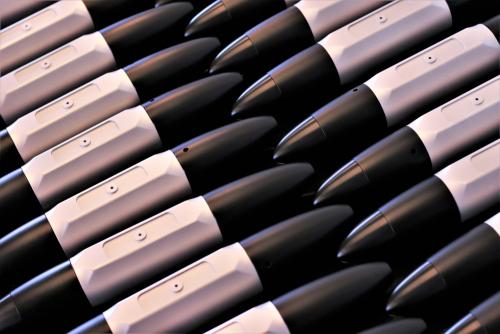Onboard and ashore, accidents during mooring operations are one of the biggest causes of marine accidents. Figures published by the European Harbour Masters’ Committee indicate that 95% of personal injury incidents are caused by ropes and wires, with 65% of these injuries occurring during mooring operations. Unsurprisingly, it’s an ongoing source of concern for the maritime industry and new guidelines aimed at improving mooring safety for all ships are due to take effect from 2024.
Magnus Dickens, venture lead for the Open Innovation division of equipment supplier Wilhelmsen Marine Products, says reading through the numerous accident investigation reports and insurance claims relating to mooring line incidents was one of the worst aspects of his job. The forces unleashed when a mooring rope fails and recoils, snap back, are often fatal for any crew, passenger or longshoreman who should be in the way.
But, in recent years, a new generation of mooring technologies is creating the possibility not only of gauging rope tension as a warning system to ensure working load limits are not being exceeded, but also collating that data to develop a better understanding of the stresses involved and how it is likely to affect a rope’s behaviour and rate of deterioration across its lifetime.
One such solution is Wilhelmsen’s Smart Ropes system, which earlier this year won the Maritime Safety Award from the Royal Institute of Naval Architects and Lloyd’s Register. First launched at the SMM trade exhibition in 2018, the Smart Rope is a patent-pending battery- powered weatherproof measuring unit that’s embedded into the mooring rope itself and transmits key tension, time and temperature information wirelessly back to the bridge or cargo control room to serve as a decision support tool.
The product, which weighs just under 1kg and could in theory be used with any 12-strand mooring rope, is currently undergoing its final round of testing onboard a select number of vessels, ahead of full commercial rollout in the near future.
Unique solution
Dickens tells The Naval Architect that while there are other sensor-based mooring products, the Smart Rope appears to be unique. He says: “There are some automatic winches with auto tension, but this is more of a theoretical calculation based on the rope diameter and turns of the winch. People don’t trust it and it’s not that accurate.
“At the other end of the spectrum are the more traditional load cells on the bollards, which you see at some LNG terminals and permanently moored vessels. The problem with these is that the data and the history resides with the port or terminal who operate the bollards, and we think it needs to lay with the vessel, because the real value comes when you can combine this data from multiple port calls and aggregate that.
“That’s the other half of the equation; you have the alarm and safety factor but the eternal question is how long the rope will last and when it should be changed. That very much depends on the life of the mooring rope. The high peak loads will deteriorate the mooring line but it’s not always visible.”
The benefits of such aggregation can be demonstrated by the example of data collected over a four month period from a vessel with Smart Ropes installed. It was found that for more than 50% of the time two ropes were being used at just 5% of their minimum breaking load (MBL). However, the same two ropes had a high peak load every time they left a specific port, implying that, against guidelines, they were being consistently used to manoeuvre out of port.
This would reduce the two ropes’ lifespan while other ropes were being under-utilised, yet all the mooring ropes would be changed on the same predetermined schedule.
Target markets
Wilhelmsen is focusing its efforts on three segments of the merchant fleet where it sees greatest opportunities. One of those is passenger shipping, where safety is a priority. Last October, it announced that Viking Cruises and ro-pax operator Finnlines had both signed up to trial Smart Ropes and complementary digital mooring solution aboard selected vessels.
At the other end of the spectrum are dry cargo ships, which often berth at very exposed ports where there are large tide variations and draught differences as a vessel loads or unloads, demanding a reliable mooring solution. “What’s interesting here is there is pressure not only from the vessel owner but also the terminal, because every time they have an accident – even though usually it’s not serious human injuries – a rope parting causes delays. So the ports are incentivising this new technology,” says Dickens. Shipowner Berge Bulk has been participating in the pilot studies.
The third segment, and the one which Dickens admits is the most difficult to crack, are oil and gas tankers. He comments: “One of the reasons we haven’t done more in that segment is the electronics onboard a tanker vessel have to be specially approved to ensure it’s intrinsically safe and can’t cause a spark or anything like that. But that is something we’re looking at because it’s a very interesting market.”




